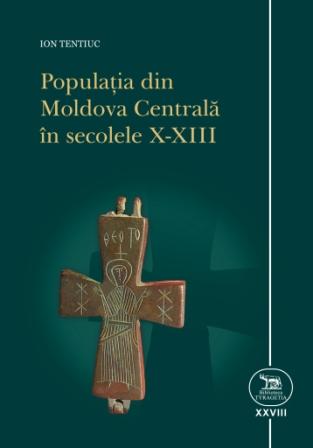The monograph represents an important synthesis of the historical, social-economic, political, demographic and cultural processes from the development of the first regional and state-level formations of the Romanian population in the Carpathian-Nistrian area in the 10th-13th centuries. The book is based on a thorough research of archaeological and written documentary sources (Byzantine, Scandinavian, Arabic and Old Russian), of the critical approach of historical-archaeological concepts regarding the population that lived in the forest steppe East-Carpathian area. Besides the topo-planigraphic research of settlements, fortified structures and of housing and burial complexes, the book approaches systematically and integratively the basic occupations - agriculture, animal husbandry and crafts, of which, by magnitude, dynamism and economic importance, iron metallurgy is distinguished. The phenomena related to the development of transit trade and monetary circulation are analyzed in full. The presence of tool and weapon deposits, silverware hoardings with Islamic and Byzantine coins and ornaments, the increase in the number and diversity of types of iron weapons, are related to the penetration and stationing in the region of Scandinavians, as well as craftsmen, soldiers and merchants, which transit the space from the Baltic Sea to the Black Sea on old river trade routes, attracted by the fast and wealth of the great economic, political and cultural centers of the time - Byzantine Constantinople and Baghdad of the Muslim caliphate.
CONTENTS
INTRODUCTION
Chapter I. HISTORIOGRAPHY
1.1. Soviet historiography
1.2. Romanian historiography
Chapter II. SETTLEMENTS, DWELLINGS AND HOUSEHOLD ANNEXES
2.1. Topography, planography and stratigraphy of settlements
2.2. Characteristics of dwellings
2.3. Household annexes (hearths, ovens, auxiliary pits)
Chapter III. MAIN OCCUPATIONS
3.1. Agriculture and animal husbandry
3.1.1. Agriculture
3.1.2. Animal husbandry
3.2. Crafts and auxiliary occupations
3.2.1. Metallurgy
3.2.1.1. Acquiring iron ore
3.2.1.2. Installations and remnants of metallurgical activity
3.2.2. Ironwork
3.2.2.1. Ironwork tools
3.2.2.2. Iron products
3.2.3. Processing of copper and bronze
3.2.3.1. Molds and metal casting vessels
3.2.3.2. Pieces of colored metal
3.2.4. Pottery
3.2.4.1. Ceramic manufacturing technology
3.2.4.2. Ceramic burning installations
3.2.4.3. Ceramic forms
3.2.5. Other crafts (working wood, stone, leather, bone, fibers)
3.2.6. Auxiliary activities (hunting, fishing, harvesting)
3.3. Trade and coin circulation
3.3.1. Imported ceramics
3.3.2. Glass and glass paste articles
3.3.3. Coins and coin circulation
3.3.3.1. Islamic coin
3.3.3.2. Byzantine coin
3.3.3.3. European coin
IV. SPIRITUAL LIFE, FUNERAL PRACTICES
4.1. Spiritual life
4.1.1. Alphabetiform signs
4.1.2. Testimonies of Christian spirituality
4.1.3. Christian churches
4.2. Funeral practices
4.2.1. Funerary rite
4.2.2. Funeral ritual
4.2.3. Destroyed tombs. Pagan practices
4.2.4. Findings from the funeral complexes
V. FORMS OF SOCIAL AND POLITICAL ORGANIZATIONS AND RELATIONS OF THE AUTOCHTHONES WITH THE BYZANTINE, SLAVIC AND TURANIC WORLD
5.1. Forms of social and political organization
5.2. East-Carpathian Romanity and the Byzantium
5.3. Romanians from the East of the Carpathians and their contacts with the late Slavs
5.4. Relations between the autochthones and the Turanics
CONCLUSIONS
Bibliography
Abstract
List of illustrations
Appendix (Tables, Diagrams, Maps)











 31 August 1989 St., 121 A, MD 2012, Chisinau, Republic of Moldova
31 August 1989 St., 121 A, MD 2012, Chisinau, Republic of Moldova

















































